Veria: A Trove of Historical and Natural Treasures...
With its lush riverbanks, fine museums,...
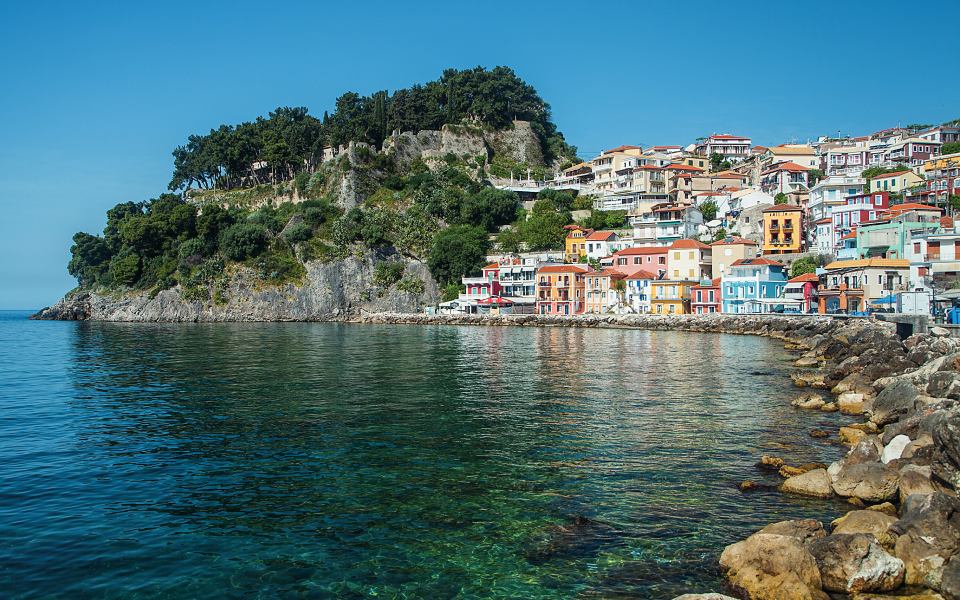
View of Parga, Epirus, with its medieval castle on the hill to the left.
© Olga Charami
While there’s no bad time to visit Greece, in the first half of June you’re still ahead of the madding crowds of the high summer season (late June through early September). The weather is typically warm and sunny, with the very occasional light shower: ideal for sightseeing, exploring archaeological sites, and enjoying outdoor activities. But things will really start to hot up towards the end of month, so be sure to pack accordingly.
Another bonus with June is that the landscapes are still lush green and carpeted with colorful late springtime flowers. It’s also a good time for a relaxing beach holiday, being less crowded than July and August. Accommodation prices in many parts of the country are also more moderate.
Here’s our pick of some of our favorite mainland and island destinations for the month of June. Be sure to click on the links and check out our extended guides.
This list is by no means exhaustive, but it will hopefully it will provide you with some inspiration.
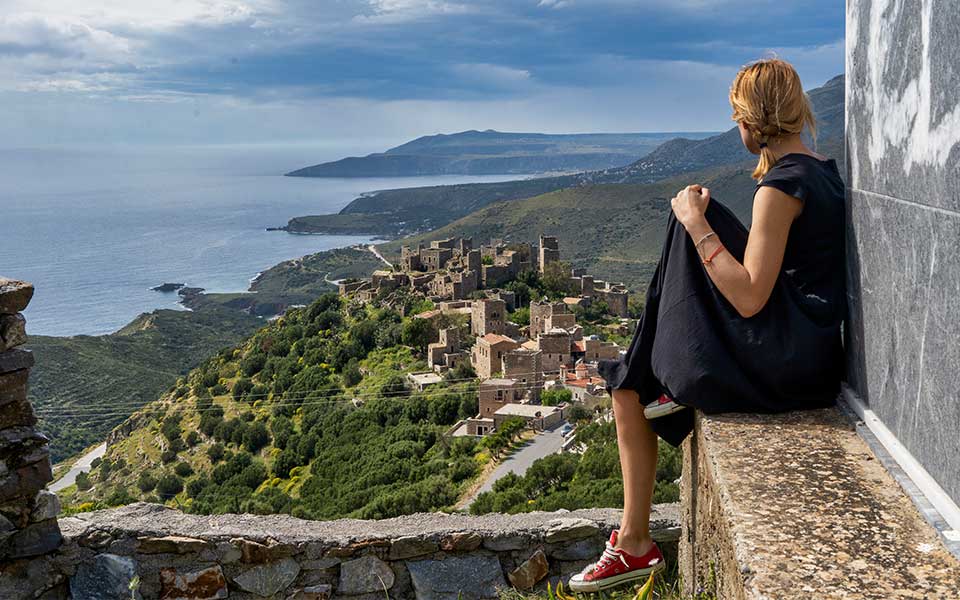
A view of Vatheia, one of the most beautiful villages in Mani.
© Perikles Merakos
Wild, rugged terrain, serene villages, and remote beaches, all in the shadow of the majestic Mount Taygetos … This is Mani, the middle peninsula in the southern Peloponnese, the ideal destination for those looking to get off the beaten path.
Exploring this untamed corner of Greece requires a hearty appetite for walking – even more so driving – as the villages lie scattered about the peninsula. Nevertheless, you’ll be rewarded with some of the most jaw-droppingly beautiful landscapes. The Maniots themselves are hardy folk, notoriously hard-edged but fiercely loyal and hospitable. For our money, this is Greece at its most authentic.
Famed for its stone-built tower houses, serene villages, rugged terrain, and quaint sheltered harbors, the Mani Peninsula has actively shunned mass tourism, but is popular with holidaying families and couples from other parts of Greece in the summer months. A trip in June may be just the ticket to beat the crowds.
What to look out for: Porto Kagio, the southernmost natural harbor of mainland Greece, is the perfect place to enjoy an early evening meal next to the sea. Also, a boat ride to the Cave of Diros makes for a fabulous excursion.
Check out our comprehensive guide to the Mani Peninsula here.
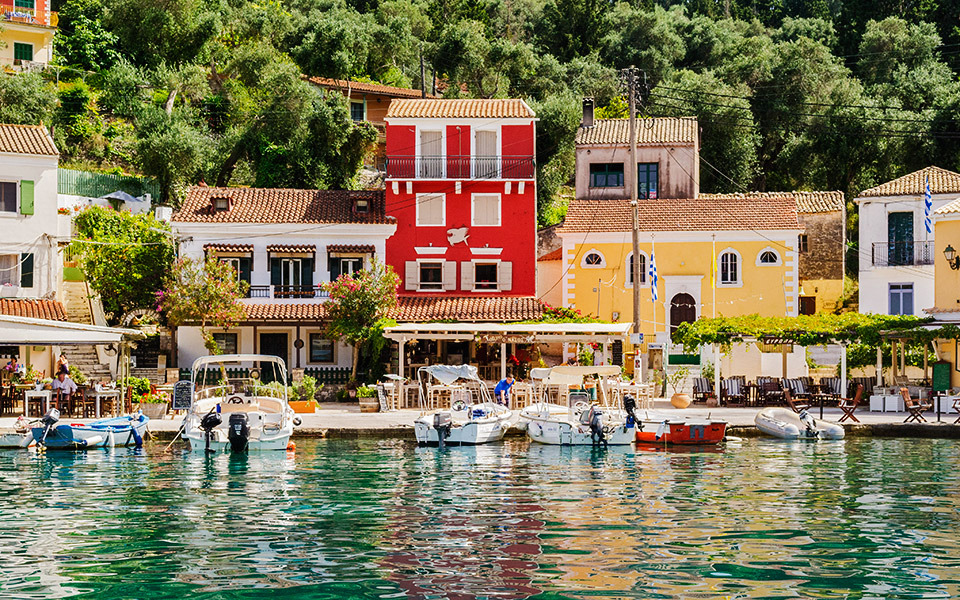
Loggos is one of the three villages on Paxos.
© Shutterstock
Renowned for its crystal-clear waters, pint-sized Paxos is the largest island in the Paxi group in the Ionian Sea, a stone’s thrown from the south coast of Corfu. According to the ancient Greek myth, Paxos was a chunk of Corfu that the sea god Poseidon skewered with his trident and catapulted into the sea!
Green all over and clad with tall olive trees, the island is home to just three villages: Gaios, featuring stylish neoclassical buildings colored with faded burgundy and pale ochre, Loggos, halfway up the east coast, and Lakka, famed for its scenic horseshoe-shaped harbor. The pace of life on Paxos is much slower than its bigger and oftentimes more overcrowded neighbor, and its small size – just 16km in total length – means that this tranquil little corner of the Ionian Sea as the ideal holiday destination for families.
The island is classified under Natura, the EU’s network of protected areas that offer havens to threatened species and habitats, making it a top choice for birdwatchers and nature lovers. And with its well-maintained network of walking paths criss-crossing across the island, late afternoon walks before dinner will reward you with sweeping vistas over the sea.
Top tip: Hire a boat from Loggos, load it up with food, water, hats, armbands, masks and snorkels and spend the day exploring the island’s sparkling coves and beaches. All are pebbled except for man-made Mongonisi, on the southern side, which is a family favorite.
Read more about Paxos and its even smaller neighbor, Antipaxos, here.
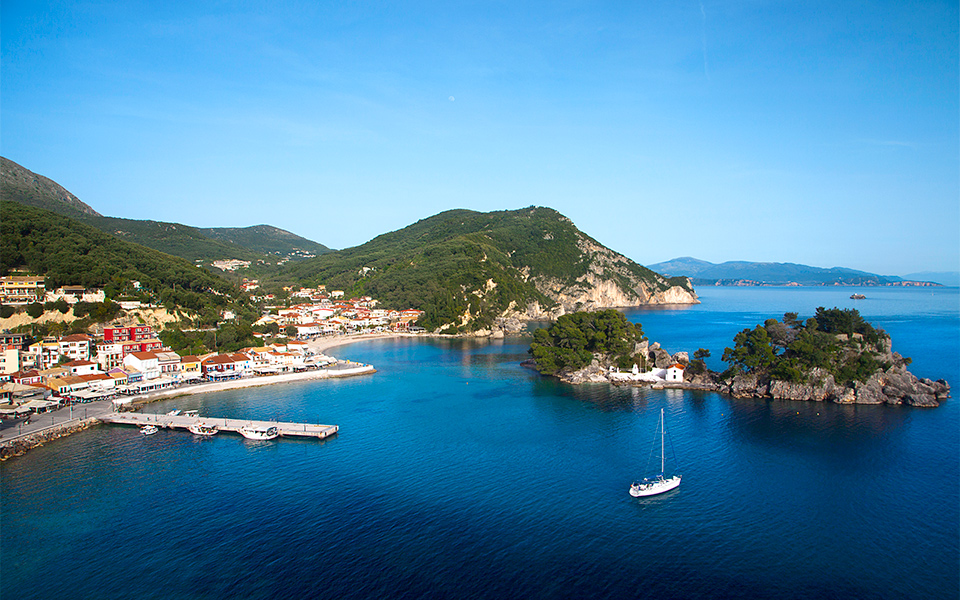
The view of Parga from the castle.
© Olga Charami
Remaining on the western side of Greece, the picturesque coastal town of Parga in Epirus, with its colorful houses, narrow streets, and historical landmarks, is the perfect place for a June escape. It’s also within each reach of some of the country’s best beaches, including Syvota to the north. And whilst Parga may be on the mainland, it definitely has that “island vibe.”
Built amphitheatrically around the bay, in the shadow of a medieval hilltop castle, Parga has everything you could want from a relaxing vacation: long sandy beaches lapped by an emerald sea, a charming promenade to stroll along in the evenings, offering a wide selection of eateries to suit every taste. Italian pizzerias and trattorias are especially well represented here.
And there’s plenty more to do for those who like to stay active. Only 30km away, the River Acheron, known to the ancient Greeks as one of the five rivers of the underworld, is a fabulous place to explore and enjoy a picnic. Meanwhile in the opposite direction to the north, a beautiful coastal road takes you to Syvota, another popular holiday destination where forested hills meet hidden coves with sandy beaches.
For history buffs: On its banks of the Acheron are the archaeological ruins of the “nekromanteion,” an ancient temple dedicated to necromancy, the practice of communicating with the dead. Built at an entrance to the underworld, this was where pilgrims from around the ancient Greek world would come to communicate with their departed loved ones.
For more on Parga, click here.

Oia at sunset. Where else?
© Shutterstock
Ah, Santorini, the jewel in the crown of the Cyclades. Where to begin? Well, it often tops the bill in various popularity polls and travel articles – “most beautiful sunset,” “most beautiful village,” “favorite honeymoon destination,” and so on. But the brutally honest truth is that unfettered tourism has been a real scourge for this most popular of Greek islands.
With record numbers of tourists estimated to be inbound this summer, beating the hoards in June may be an opportune time to see some of the island’s most iconic sites without the crowds. There are plenty of places to enjoy those breathtakingly beautiful views over the volcanic caldera – the sunset at Oia is spectacular – and a visit to one of the island’s many black-sand beaches, backed by dramatic cliffs (think Vlychada), is an unforgettable experience.
Must try: Santorini is fast becoming a must-visit destination for wine aficionados. The island’s winemakers are exploiting the richness of the local varieties – most notably the Assyrtiko – to create quality wines, which have impressed oenophiles and picked up prizes and distinctions worldwide.
Tear up the standard list of must-dos and follow our alternative guide to Santorini instead.
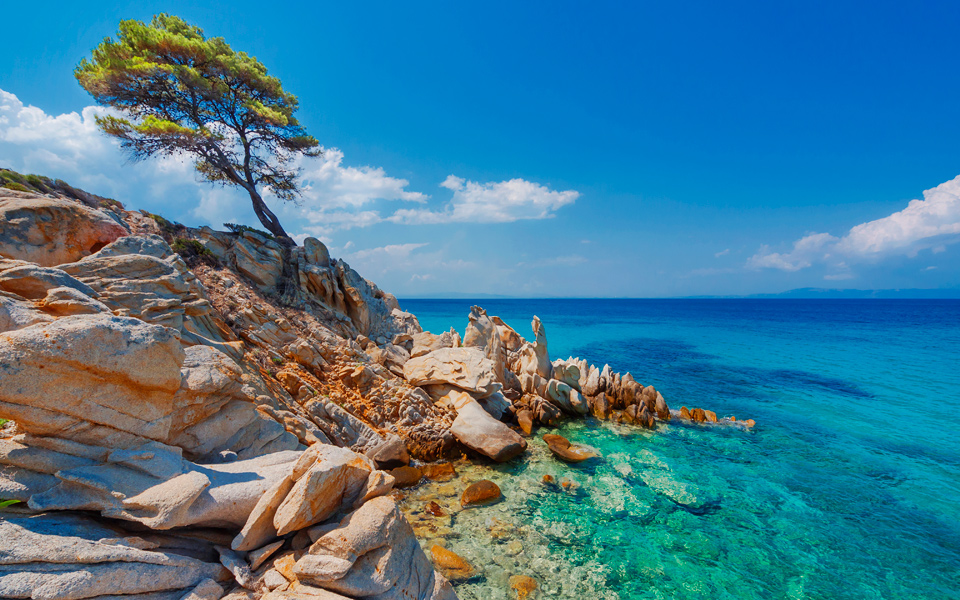
Fans of Halkidiki will tell you that once you've seen nature like this, no where else compares.
© Shutterstock
Halkidiki is blessed with places of jaw-dropping natural beauty as stunning as they are diverse. The region’s unique geography, with its three peninsulas jutting out to form two sheltered gulfs, is conducive to local travel by boat and to coastal exploration, where visitors can discover locations ranging from exotic islets and endless sandy beaches washed by crystal-clear waters. What’s more, it’s a region scattered with Byzantine towers and other fortification works, as well as the ruins of ancient cities associated with the Macedonian kingdom of Philip II and his son, Alexander the Great.
The abundance of seafood in the region (including the celebrated mussels of Olympiada), as well as the local meat, the delicious cheeses, and the area’s famous green olives make it a superb destination for foodies.
Each peninsula has established its own personality. Kassandra, the westernmost, is chiefly known for its cosmopolitan feel, with Sani Marina and beach bars stealing the show, although it’s not without its pristine landscapes. Sithonia, the middle peninsula, while offering five-star and boutique hotels, is especially popular among nature-lovers on account of its many secluded beaches and its camping options. Lastly, the area north of Mount Athos in the easternmost part of Halkidiki, a region which includes the island of Ammouliani, is constantly upgrading its services to offer visitors unique experiences, such as the Aristotle Trail (the renowned Greek philosopher was born in the ancient city of Stagira, at the far eastern end of the peninsula), and trekking on Mount Holomon.
A taste of northern Greece: The cultivation of mussels has a long tradition in Halkidiki. The famous Olympiada variety, large and bursting with flavor, are guaranteed to be the most delicious you’ll every try. Packing more minerals and nutrients than just about any other food source on the planet (three times more iron than beef liver!), these bad boys are best enjoyed steamed with a drizzle of local wine or ouzo. Magic.
Check out our A-Z guide of Halkidiki here.
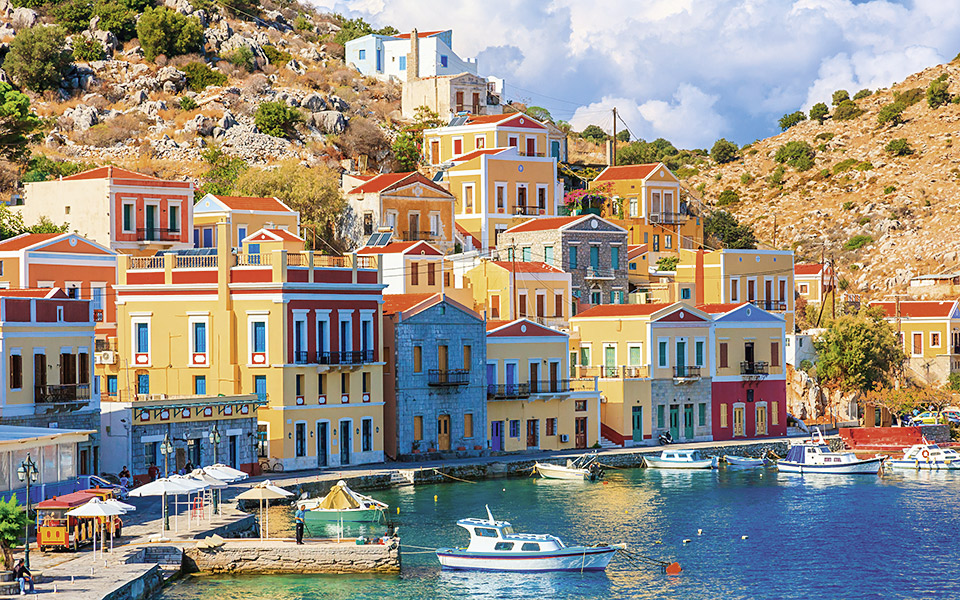
The colorful facade of Gialos, Symi's main port.
© Shutterstock
Elegant charm in a small package, the island Symi, located in the Dodecanese archipelago in the southeast corner of the Aegean, is a kaleidoscope of color. Famed for its 19th and early 20th century shipbuilding and sponge diving industries, the island grew prosperous; its former economic might reflected in the multi-colored neoclassical mansions at Gialos, the island’s port.
The island, a stone’s throw from Turkey, has a dedicated following, most notably among northern Europeans, providing a low-key alternative to other, busier islands of the Dodecanese such as Kos and Rhodes.
Boasting great beaches and traditional eateries, Symi is also home to some beautiful monasteries, most notably Panormiti Monastery, which houses a miraculous icon of the Archangel Michael (one of four in the Dodecanese). The monastery also has guest rooms. Three days there is as restful as a full month of vacation.
Don’t leave the island before trying the delicious bite-sized Symi shrimp, often pan-fried and served as a meze with a glass of ouzo. These little guys are so small and delicate, you can (and should) eat them whole: shells, tail, head, and all!
What to do: Take a boat trip around the island, where you’ll discover tiny bays that look like paintings, such as Ai-Giorgis Dysalonas, with its deep green waters and vertical rock face rising 300m from the beach.
For more suggestions on what to do on Symi, click here.
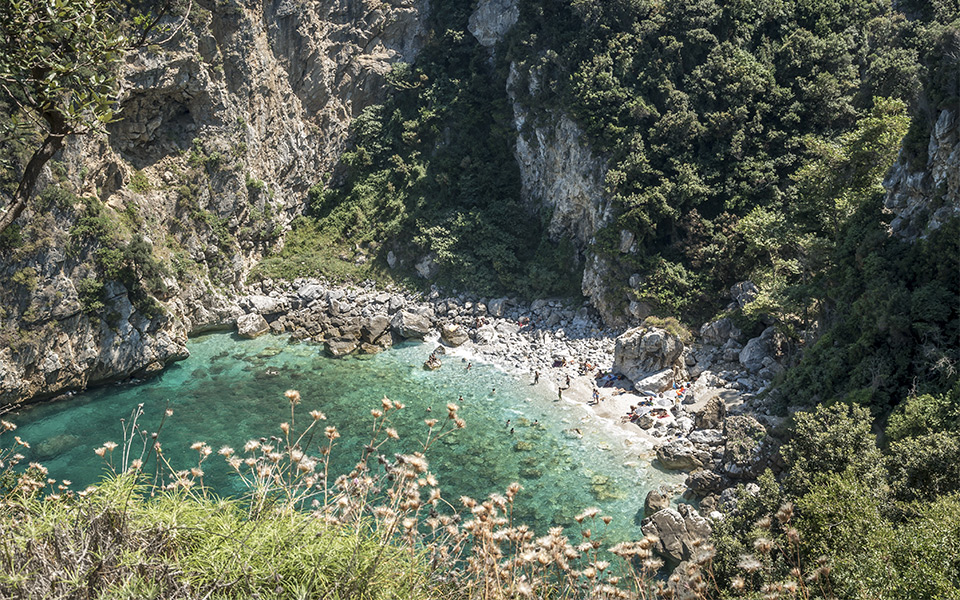
Fakistra Beach, Pelion
© Shutterstock
Returning to the mainland, the region around Mount Pelion in southeast Thessaly is perhaps not the first place that comes to mind when considering a June vacation. But the great range of activities on offer, including hiking, canyoning, and extreme sports, is making this picturesque corner of Greece a popular choice for those in search of some serious adventure.
Combining mountain and sea, the long, sandy beaches of eastern and southern Pilio are often featured in travel magazines among the most beautiful on the mainland. In Greek mythology, Mount Pelion was the home of Chiron the centaur (half-man, half-horse), tutor of Achilles, and the scene of the infamous dispute between the goddesses Hera, Aphrodite and Athena that led to the Trojan War.
Densely forested, Pilio is known for its network of tree-lined footpaths, which were used by locals to navigate the area before the construction of roads. Mylopotamos is one of the most well-known beaches of Pelion; the large rock with its characteristic hole that divides the beach in two is the ideal selfie spot (head to Fakistra if you like wild landscapes and beaches without sun loungers).
Aside from the lush vegetation and natural beauty, the region is also known for its fairytale-like villages, containing many beautifully maintained stone-built mansions and Byzantine churches.
Historic railway: A wonderful way to see Pilio is via the “Moutzouris” steam train, which runs on a 60cm gauge track, one of the narrowest in the world. The train sets off from Ano Lechonia and heads to Milies in a 90 minute ride, stopping at various villages.
Click here for our guide to Pilio’s beaches and mountain villages.
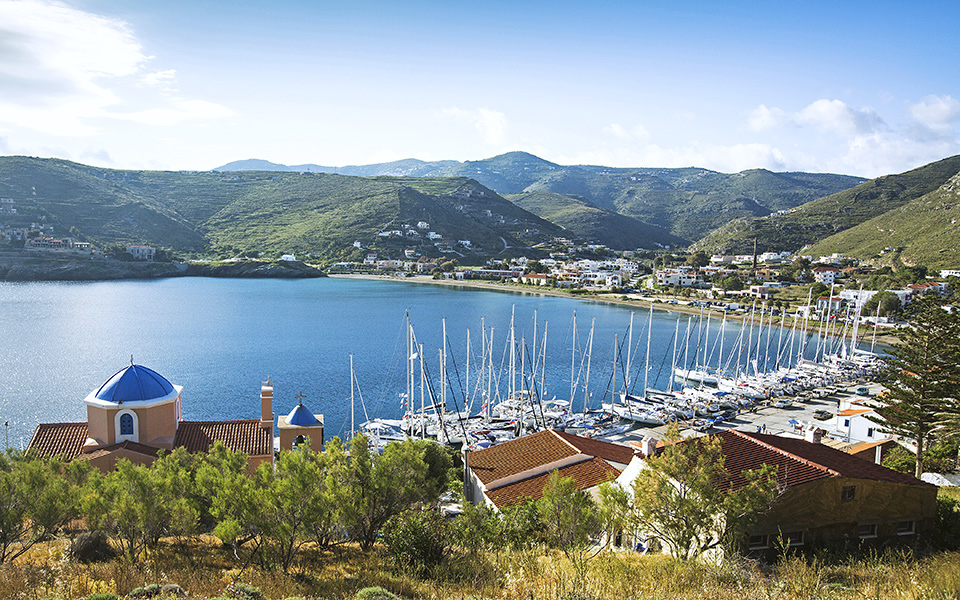
Kea is a popular destination for sailing tourists.
© Shutterstock
The island of Kea (or Tzia, as it is also referred to), lies in the northwestern part of the Cycades. What makes it particularly attractive is its proximity to Attica, making it the perfect early summer break from Athens. From the eastern port of Lavrio (about one hour from downtown Athens), the visitor only needs approximately an hour’s boat ride before hitting this little gem of a destination.
Despite being so close to the Athens, Kea has retained a sense of geographical detachment by remaining off the beaten track for many tourists.
As you approach the island, you’re greeted by its wild western slopes, the port of Korissia and, in the distance, Ioulida – the island’s capital (or Hora). Pretty and low-key, it is among the most charming in the entire Cyclades. The town hall – designed by Ernst Ziller, the architect behind prominent buildings in Athens, Patras and other Greek cities between the late 19th centuries and early 20th centuries – is shaped amphitheatrically around an enormous rock and was constructed over the remains of a medieval castle.
Kea has a surprisingly varied landscape for a Cycladic island: oak forests; a few olive trees; rugged rocky slopes interspersed by almond groves and, scattered throughout, tasteful summer homes, many of which have been built by charismatic architects inspired by the simplicity of Kea’s traditional farmhouses built out of local stone.
The island’s coastline offers a wealth of beaches. Many visitors prefer the cosmopolitan beach at Koundouros, which has become a popular spot for holiday homes in recent years. For a more peaceful experience, head to nearby Koundouraki, or the succession of more remote, pebble beaches to the south.
Look out for: An old cobblestone pathway that links Ioulida to the village of Otzias leads to one of the island’s best-known attractions, an impressive stone sculpture of a lion. The sculpture, which marks the beginning of the path, is thought to have been carved in the early Archaic period, sometime between the end of the 7th and early 6th century BC.
Perfect for a weekend escape from Athens, click here from some handy tips on what to see and do.
With its lush riverbanks, fine museums,...
On the Cycladic island of Tinos,...
Charming architecture, unique beaches, rich history,...
While some historic buildings teeter on...